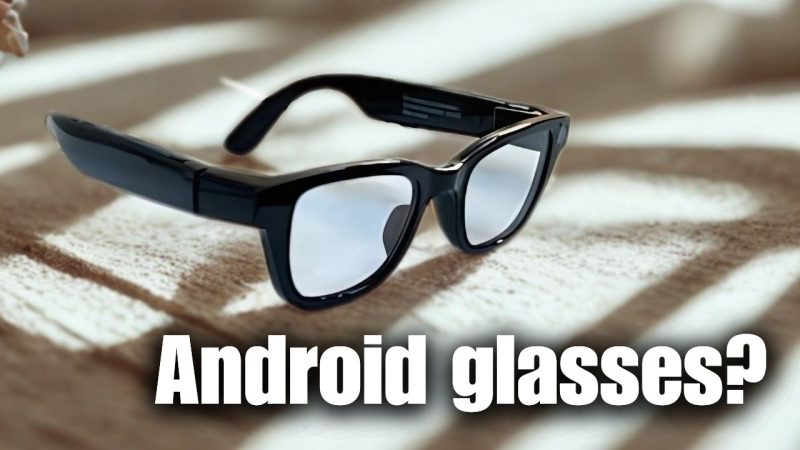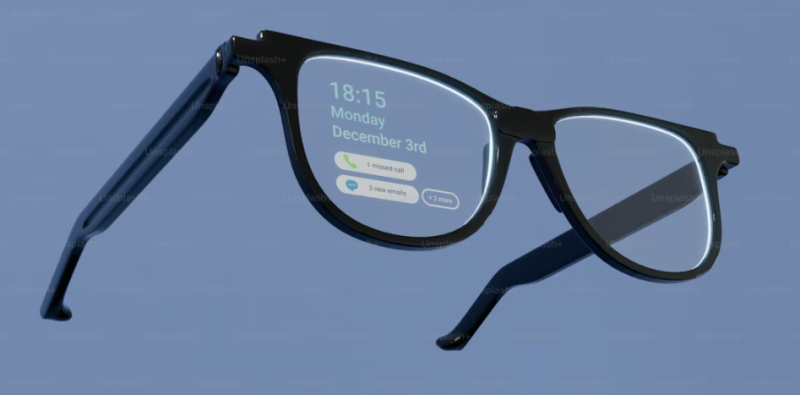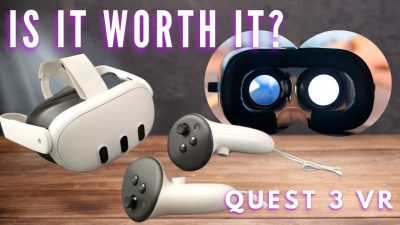📢 Disclosure: Some links on this page are affiliate links. As an Amazon Associate, I earn from qualifying purchases at no extra cost to you. Thanks for your support.
In the recent Google I/O, we finally got to see a glimpse of the long-anticipated Google XR smart glasses, powered by Gemini AI and built on Android. But what I wanted to know is, how do these compare to other smart glasses like the Ray-Ban Meta Smart Glasses or RayNeo X2 AR Glasses? And are they the next big thing in wearables, or just another prototype destined to fade?

Let’s break it down.
What are the Google XR smart glasses?
From what I have gathered, these are real smart glasses, unlike Google’s Project Iris, which didn’t come to fruition. In 2021, Google initiated Project Iris, aiming to develop a new AR headset that resembled ordinary eyeglasses. The project underwent several iterations and was even showcased at the 2022 Google I/O keynote. However, they never managed to hit the market.
A couple of years after that, Google announced Android XR, an extended reality operating system designed to support AR devices, including smart glasses and headsets. This platform integrates Google’s Gemini AI, aiming to provide seamless AR experiences. The Android XR initiative signifies Google’s continued interest in AR, focusing on creating a well-integrated ecosystem for future devices.
From my last article, we checked Google and Samsung’s Project Moohan XR headset, where we can see Android XR being used. The Samsung headset features some really groundbreaking AI communicative technology. Make sure to read about that here!
But these new ones are in a much smaller package and are designed to be as small and as delicate as regular glasses, rather than a headset, which I think most people feel more comfortable with. And from what we’ve seen so far, they’re packed with some awesome features. Unveiled at Google I/O 2025, these smart glasses represent Google’s new push into Extended Reality (XR), a blend of augmented and virtual experiences, with a focus on AI-powered, hands-free information delivery.
They’re designed to feel natural, almost invisible in day-to-day use. Rather than immerse you in virtual worlds like Meta’s Quest 3, they enhance your real-world environment with real-time contextual overlays using Gemini, Google’s flagship AI model.
From what we’ve seen, they take a lot of features from the RayNeo X2, such as navigation, camera, and AI integration. But having that Android compatibility is a gamechanger for a lot of these smart glasses. Let’s break down the key features.
Key features of Google XR smart glasses
Because they’re made by Google, you’re getting Gemini AI integration which offers a real-time context-aware assistant for translations, summaries, navigation, and Q&A -right in front of your eyes. As demonstrated, we can see that the AI is able to tell you information about subjects in front of you. Similar to the Samsung XR headset we reviewed, but in such a small form factor, this feature becomes even more special.
There’s a subtle in-lens display in one of the lenses, and this is where it truly differs from a lot of the smart glasses on the market. We’ve seen lens displays in the Rokid Max AR and the Xreal smart glasses, but these are more focused on screen performance rather than features. The key functions of the display aren’t for the same use as those glasses. With these Google XR smart glasses, the display is for on-screen alerts, translations, and directions with your navigation setup, taking away that need to be looking at your phone for those functions.
What’s different about this screen is that you can actually see the image snapshot through the lens when you take a picture, which is an improvement from glasses like the Ray-Ban Meta, as their camera doesn’t give you that feature. But you’re still getting abilities to record video, initiate calls using built-in cameras, microphones, and open-ear audio like we’ve seen already with older pairs on the market.
Gemini AI Integration
Real-time context-aware assistant for translations, summaries, navigation, and Q&A, made available straight from the glasses.
Subtle In-Lens Display
Minimal visual clutter. Key info (directions, alerts, translations) shows up only when you need it.
Voice + Gesture Control
Operate the glasses with natural speech or hand movements. No need to fumble for your phone.
Camera + Audio
Take photos, record video, or initiate calls using built-in cameras, microphones, and open-ear audio.
Android Compatibility
Full integration with your Android device, including notifications, Google Assistant, and select apps.
Some things to know:
The current prototypes tether to your smartphone, similar to how smartwatches work today. This helps keep the glasses lightweight while still powerful, although it would be even more impressive if they could function in some ways without a phone. And don’t expect 3D holograms floating in your living room because these aren’t fully AR. They use lightweight AR, mostly for overlays like text, translation, or simple UI.
From what we can see, the trend from the big tech companies is to try and embed AI into daily life, rather than contain it within screens. The Google XR smart glasses target a sweet spot in the market: the casual tech user who wants smart assistance without looking like a cyborg with an oversized headset. They aren’t trying to replace your phone or compete with headsets like the Apple Vision Pro. And from what we’ve heard, they’re partnering with Warby Parker and Gentle Monster to create frames that are stylish and discreet.
Other smart glasses on the market
By the looks of these, they’re doing a good job at keeping them looking neat. But as mentioned, these aren’t out yet, and we do have some similar options-if not cheaper ones-on the market right now.

Ray-Ban Meta Smart Glasses
For a reasonable price, the Ray-Ban Meta Smart Glasses, from Meta (formerly Facebook) and Ray-Ban, are stylish wearable glasses that blend classic design with smart technology. Unlike traditional AR glasses, they don’t feature an in-lens display; instead, they focus on audio-visual functionality. They include dual 12MP cameras, open-ear speakers, and five built-in microphones, allowing users to take photos and videos hands-free, livestream to social platforms, and interact with Meta AI via voice commands.
The glasses look like normal Ray-Bans but can record up to 60-second clips and play music or take calls, making them ideal for creators, vloggers, or anyone wanting subtle smart functionality in a fashionable form. But I can’t comment on their durability as I’ve heard mixed reviews on that. And there are other options that are packed with more functions, like the TCL RayNeo X2.
RayNeo X2
The RayNeo X2 are a pair of advanced AR smart glasses developed by TCL’s RayNeo division, designed to offer a fully immersive augmented reality experience. Unlike simple smart glasses that focus on audio or camera functions, the X2 features full-color MicroLED waveguide displays, real-time translation, smart navigation with landmark overlays, and an AI assistant built into the glasses.
Powered by the Snapdragon XR2 platform, it supports 6DoF tracking for interactive use, making it ideal for tasks like heads-up directions and live conversation translation similar to what you might find in the new Google XR smart glasses. But these are quite bulky compared to regular eyewear, and with a narrow 25° field of view, it stands out by delivering better visual AR overlays rather than just notifications or media control. But these are expensive, and if it’s just AI integration you want, you can find some cheaper alternative options.
Cheaper AI smart glass alternatives
Now after browsing AI smart glasses, I was amazed to find some really cheap deals being offered on AI smart glasses that are a fraction of the price of the RayNeo X2. Of course, these options don’t feature all the high-tech, but for simple activities like listening to audio and speech translation, they are great for the price.
Out of the options, I think this pair by GenXenon look really smart. Plus the reviews are much more positive but as with any tech where the brand is not as well known, it’s best to check them for issues and keep a hold of the warrenty incase anything goes wrong.
Thanks for reading, I hope this review of the new Google XR smart glasses helped you! By the way, if you’re on the lookout for a new laptop, make sure try our Laptop Finder Quiz. Otherwise, check out our similar tech reviews on the links below.

